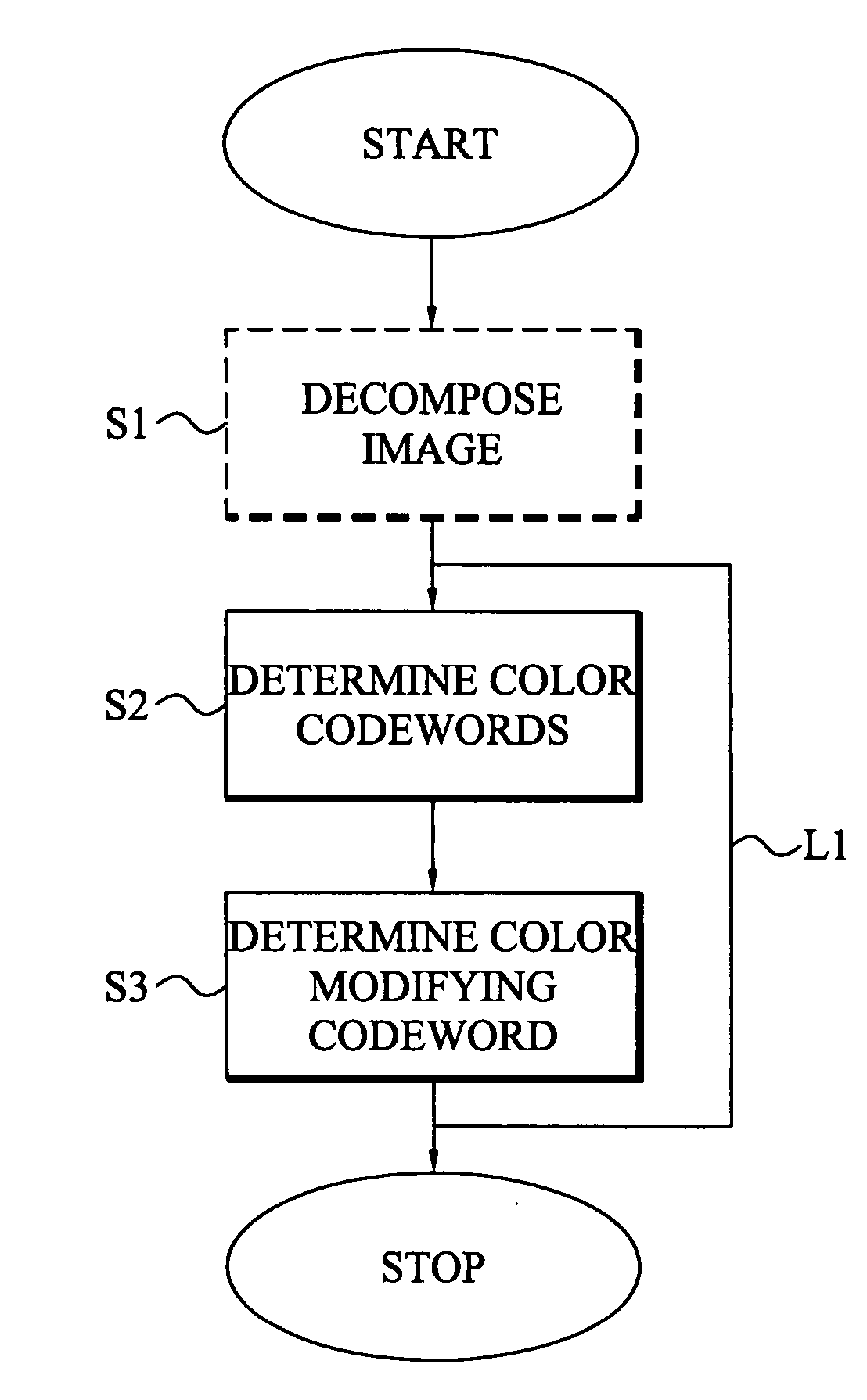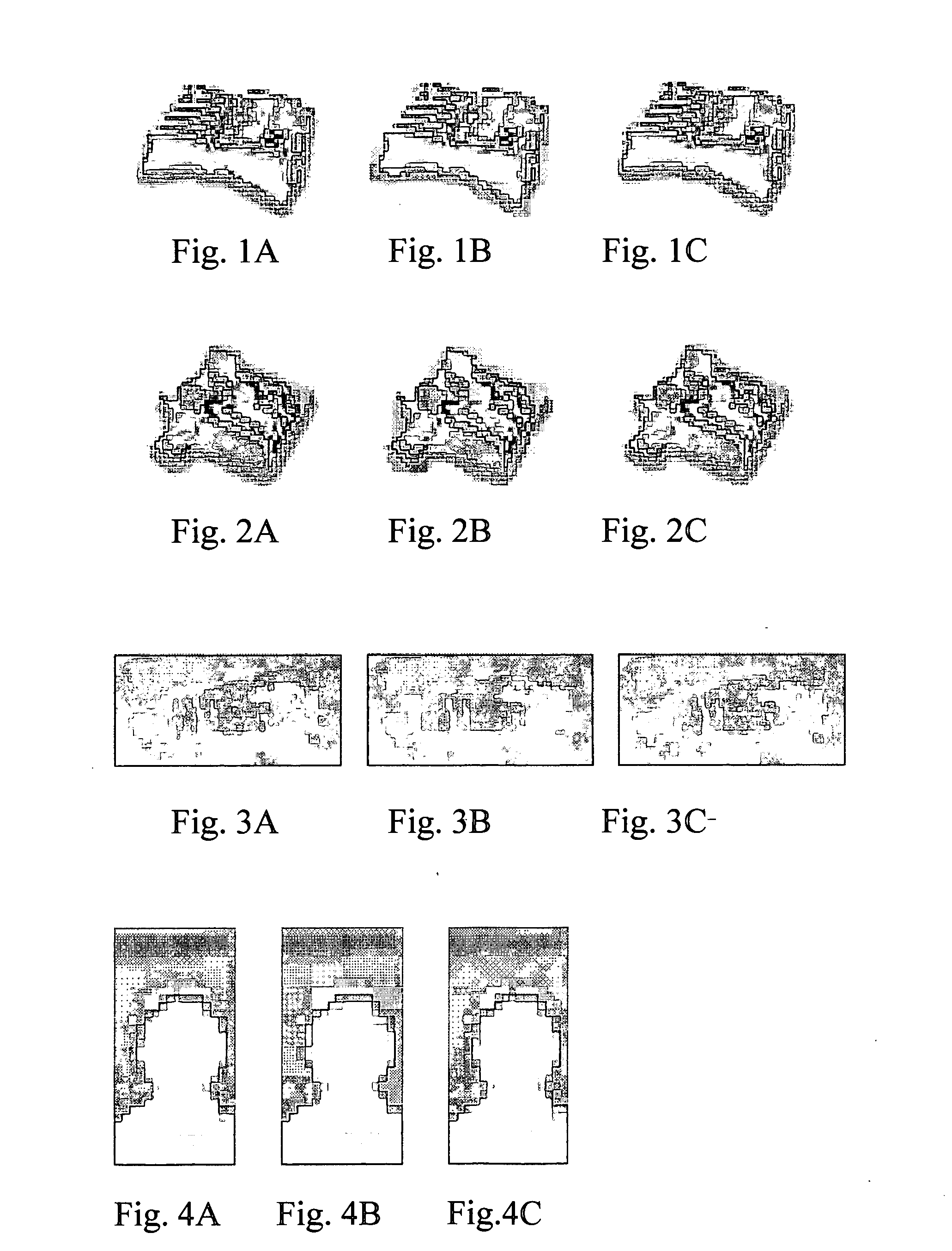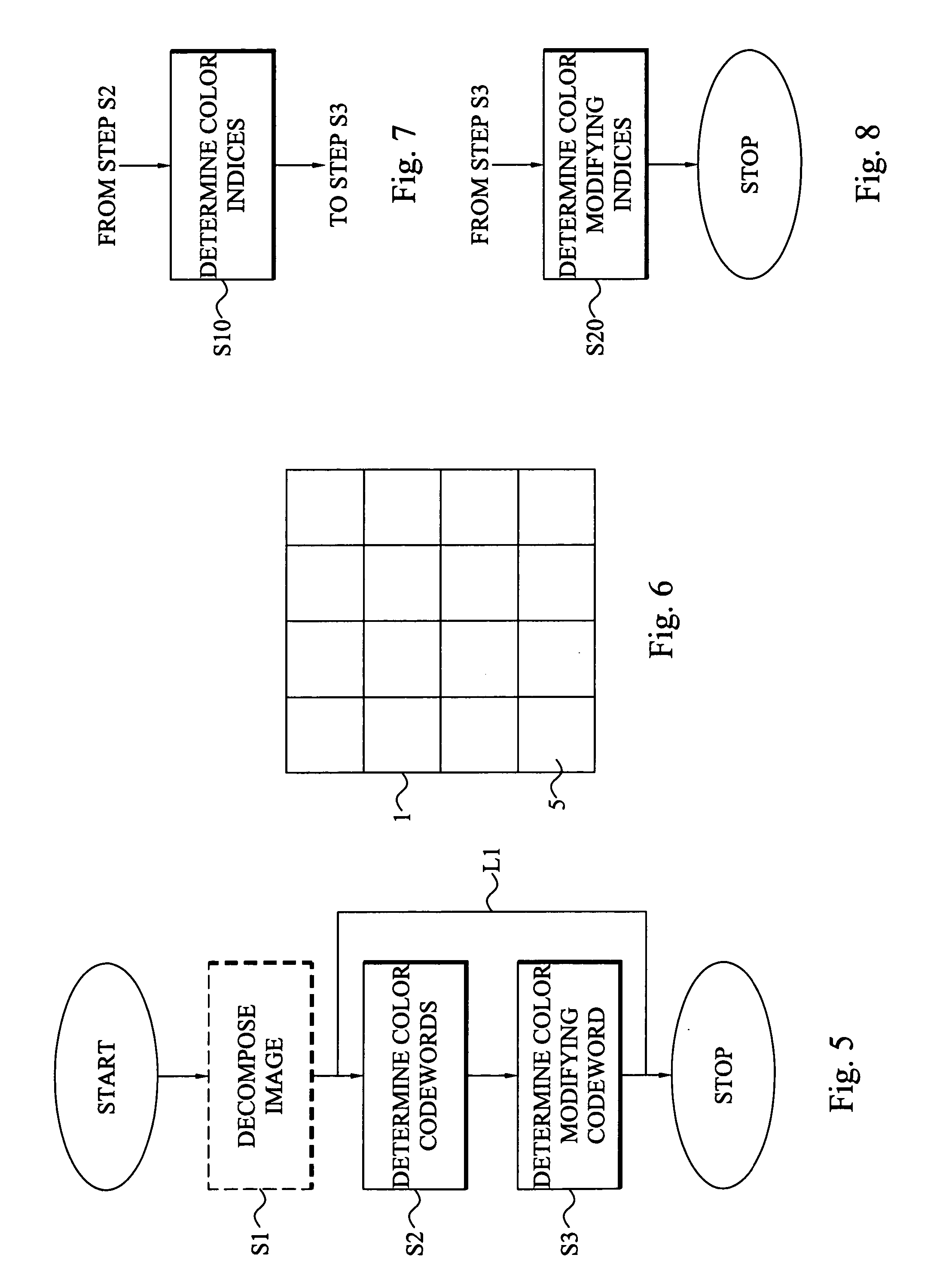High quality image processing
- Summary
- Abstract
- Description
- Claims
- Application Information
AI Technical Summary
Benefits of technology
Problems solved by technology
Method used
Image
Examples
example 1
[0189] An example of a decompression procedure for the image block illustrated in FIG. 9 is given herein. Assume that the image block has the following binary compressed representation: [0190] 10110 010110 01101 01110 100011 00001 10 10 00 01 11 00 00 11 10 10 01 00 11 00 11 01bin [0191] 00010010 01011101 110 001 111 001 011 101 000 111 101 110 100 001 011 100 001 101bin
[0192] The color components of the two color components are first expanded from RGB565 into RGB888, by replicating the three or two most significant bits to the components. For example, 10110bin becomes 10110101bin and 010110bin becomes 01011001bin. This means that the two basic colors CV0, CV1 are obtained from the color codeword: [0193] 10110bin10110101bin=181 [0194] 010110bin01011001bin=89 [0195] 01101bin01101011bin=107 [0196] CV0=(181, 89, 107) [0197] 01110bin0111011bin=115 [0198] 100011bin10001110bin=142 [0199] 00001bin00001000bin=4 [0200] CV1=(115, 142, 4)
[0201] The two first color representations are then (1...
example 2
[0204] An example of a decompression procedure for the image block illustrated in FIG. 16 is given herein. Assume that the image block has the following binary compressed representation: [0205] 1011 0010 0000 0000 0111 0100 011 000 10 10 00 01 11 00 00 11 10 10 01 00 11 00 11 01 1 0bin [0206] 00010010 01011101 110 001 111 001 011 101 000 111 101 110 100 001 011 100 001 101bin
[0207] The eight possible green component values are calculated based on the minimum and maximum green component of the second codeword in way similar to determining the different color modifiers in Example 1 above. This will result in G0=18, G1=93, G2=28, G3=38, G4=49, G5=60, G6=71 and G7=81. The first image element in the block has color index 110bin, which implies that green component G6 should be used. Since the first image element belongs to the first 2×4 (vertical, due to flipbit=1bin) sub-block, the red R0 and blue B0 components of the first color codeword having the following bit patterns should be used...
example 4
[0217] An example of a decompression procedure for the image block illustrated in FIG. 19 is given herein. Assume that the image block has the following binary compressed representation: [0218] 10110 010 00010 000 01110 100 011 000 10 10 00 01 11 00 00 11 10 10 01 00 11 00 11 01 0 1bin [0219] 00010010 01011101 110 001 111 001 011 101 000 111 101 110 100 001 011 100 001 101bin
[0220] The starting color value is then given by first color codeword RGB, where [0221] R=10110bin is expanded into 10110101bin=181 [0222] G=00010bin is expanded into 00010000bin=16 [0223] B=01110bin is expanded into 01110011bin=115
[0224] A first image element in the block has color index 10bin and should use a table index of 011bin for selecting modifier set. Such a table index corresponds to a color modifier set of [−42, −13, 13, 42] according to Table II. This means that a modifier of −13 is applicable for this image element. The direction codeword has in this case three components that are used for represe...
PUM
 Login to View More
Login to View More Abstract
Description
Claims
Application Information
 Login to View More
Login to View More - R&D
- Intellectual Property
- Life Sciences
- Materials
- Tech Scout
- Unparalleled Data Quality
- Higher Quality Content
- 60% Fewer Hallucinations
Browse by: Latest US Patents, China's latest patents, Technical Efficacy Thesaurus, Application Domain, Technology Topic, Popular Technical Reports.
© 2025 PatSnap. All rights reserved.Legal|Privacy policy|Modern Slavery Act Transparency Statement|Sitemap|About US| Contact US: help@patsnap.com



